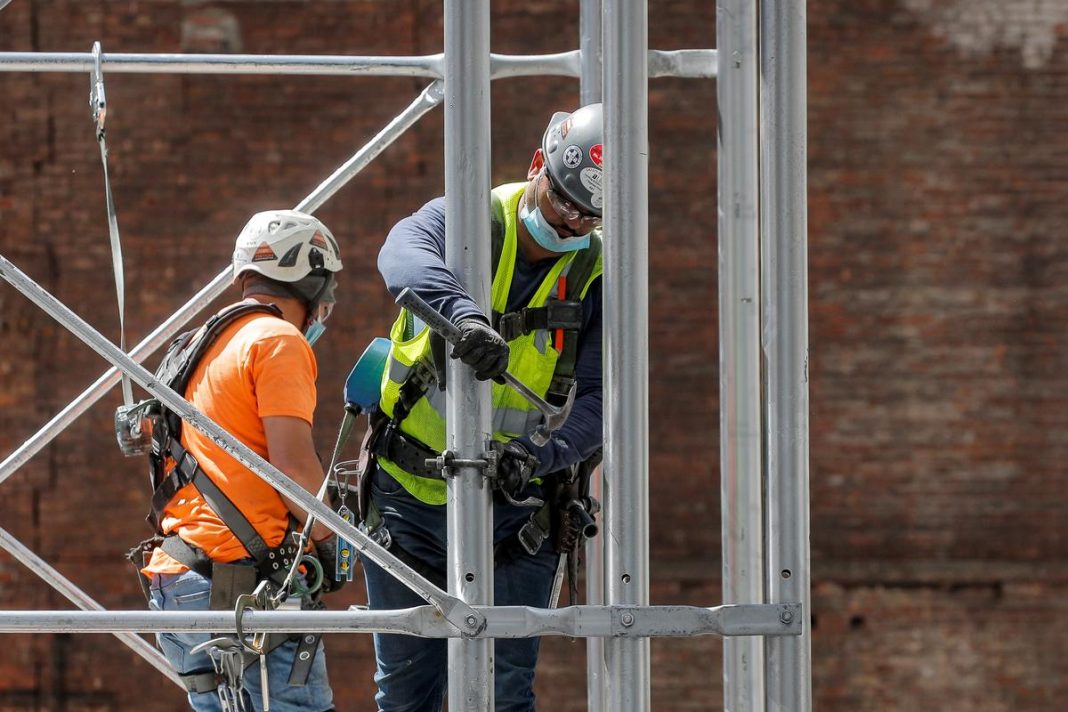The weekly jobless claims report from the Labor Department on Thursday, the most timely data on the economy’s health, will follow news last Friday of a surprise 2.5 million increase in nonfarm payrolls in May. It could reinforce views that the labor market has weathered the worst of the turbulence.
The Federal Reserve signaled on Wednesday it would provide years of extraordinary support for the economy, with policymakers projecting a 9.3% unemployment rate at year end. The unemployment rate has jumped from 3.5% in February and was at 13.3% in May.
“The steady retreat in claims is a positive development, but the labor market has suffered a traumatic blow and a full recovery will be measured in years, not weeks or months,” said
Nancy Vanden Houten, lead U.S. economist at Oxford Economics in New York. “The figures don’t capture the full extent of the blow dealt to workers during this unique crisis.”
New applications for state unemployment benefits likely totaled a seasonally adjusted 1.55 million for the week ended June 6, down from 1.877 million the prior week, according to a Reuters survey of economists. That would pull initial claims further away from a record 6.867 million in late March.
But claims for jobless benefits would still be more than double their peak during the 2007-09 Great Recession.
Many businesses have reopened after being shuttered in mid-March to slow the spread of COVID-19. However, claims remain elevated amid jobs cuts outside the consumer sector, among industries that were not initially hit by the shutdown.
Fed Chairman Jerome Powell told reporters on Wednesday there would an “extended period” during which it would be “difficult for many people to find work.”
DISTORTED PICTURE
Initial claims are recorded when a person submits a first application for unemployment benefits. Once approved they become continuing claims and are reported with a one-week lag.
The report on Thursday is expected to show continuing claims slipped to 20 million in the week ending May 30 from 21.487 million in the prior week. Continuing claims have eased from a record high of 24.912 million in early May.
That decline has been attributed to the government’s Paycheck Protection Program, part of a historic fiscal package worth nearly $3 trillion, that offers businesses loans that can be partially forgiven if used for employee salaries.
“We are seeing the labor market high on PPP money,” said Sung Won Sohn, a business economics professor at Loyola Marymount University in Los Angeles. “Once it runs out we might see a significant increase in layoffs again.”
Economists caution that neither initial nor continuing claims give an accurate picture.
The government has expanded eligibility for unemployment benefits to include gig workers, the self-employed and independent contractors who have been affected by the pandemic. These workers do not qualify for regular state unemployment insurance and must file claims under the Pandemic Unemployment Assistance (PUA) program.
Though PUA are filed weekly, they are not included in the initial and continuing claims count. Roughly 36 states are processing PUA claims. Economists recommend focusing on benefit recipients for all programs, which totaled 30 million in the week ending May 16.
“The labor market will continue to be under duress as businesses adapt to an economy running well below capacity, resulting in elevated layoffs,” said Alex Lin, a U.S. economist at Bank of America Merrill Lynch Global Research in New York.



























